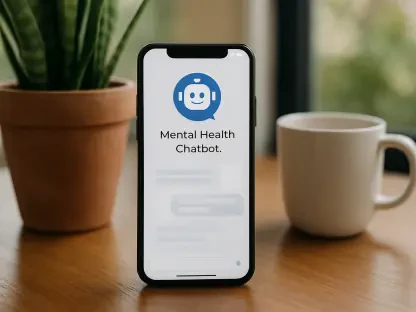In a world where patients often spend frustrating minutes—or even hours—on hold, desperately seeking answers about appointments or medical concerns, a quiet revolution is underway. Picture a busy hospital call center overwhelmed by a flood of inquiries, with staff struggling to keep up as call volumes soar. This scenario, all too common in healthcare today, underscores a critical pain point: delayed access to care. Yet, emerging technologies like voice AI are stepping in to transform these interactions, promising faster resolutions and a better patient experience. This article explores how such innovations are reshaping healthcare communication, spotlighting a leading player in the field.
The Hidden Crisis of Patient Wait Times
Long hold times and unanswered calls remain a persistent frustration for patients attempting to navigate healthcare systems. Despite advancements in technology, many still encounter outdated phone systems that leave them waiting, often exacerbating stress during already urgent situations. A recent study revealed that patients can spend an average of 10 minutes on hold per call, with some waiting far longer during peak hours. This inefficiency not only wastes time but also risks delaying critical care, highlighting a systemic issue in need of urgent reform.
The impact of these delays extends beyond mere inconvenience, often affecting trust in healthcare providers. When a patient cannot reach a representative to schedule a follow-up or clarify a prescription, the ripple effect can lead to missed treatments or worsening conditions. Voice AI emerges as a potential solution, offering a way to streamline these interactions and reduce the burden on overworked staff. By addressing this hidden crisis, the technology aims to restore confidence in healthcare access.
Why Efficiency in Healthcare Communication Is Critical
Beyond the frustration of wait times, the stakes of efficient communication in healthcare are higher than ever. With patient volumes rising and staff shortages becoming more acute, call centers face immense pressure to handle administrative tasks alongside urgent medical inquiries. Inefficient systems can directly contribute to delayed treatments, as patients struggle to secure timely appointments or follow-ups, often resulting in poorer health outcomes.
Moreover, the administrative burden on healthcare workers continues to grow, with many spending significant time on repetitive tasks like scheduling or answering basic questions. This diverts attention from patient care, amplifying burnout rates among staff. The adoption of AI-driven solutions in healthcare is gaining traction as a means to tackle these systemic challenges, paving the way for smarter, faster communication that prioritizes both patient and provider needs.
Assort Health: Leading the Charge with Voice AI
At the forefront of this transformation is Assort Health, a voice AI startup redefining patient access through its innovative AssortOS platform. This technology integrates seamlessly with electronic health records and practice management software, enabling features like automated call triaging, appointment scheduling, and routing patients to the right staff. Across specialties such as orthopedics and cardiology, AssortOS reduces phone wait times by addressing common queries instantly and coordinating complex workflows like lab test scheduling or prescription renewals.
The tangible benefits of this system are striking, with Assort Health claiming a return on investment within just 30 days for healthcare providers. For instance, a large clinic using the platform reported a 40% reduction in call handling time, allowing staff to focus on more critical tasks. By automating repetitive processes, the technology not only enhances operational efficiency but also improves the patient experience, ensuring quicker access to care without sacrificing accuracy or safety.
Expert Insights on Assort Health’s Impact
Industry leaders and experts are vocal about the potential of Assort Health to transform healthcare communication. Co-CEO Jon Wang emphasizes the platform’s rapid ROI, stating, “Providers see measurable value within 30 days, as our system cuts down on wasted time and boosts efficiency.” Meanwhile, co-CEO Jeffery Liu highlights the edge of Assort Intelligence, noting, “Unlike other voice AI tools prone to errors, our focus on safety and performance ensures reliable automation across patient interactions.”
Adding to the chorus of confidence, Galym Imanbayev of Lightspeed Venture Partners, a key investor in Assort Health’s $76 million Series B round, praises the platform’s impact. “AssortOS delivers a superior patient experience while driving organizational outcomes that set a new standard in healthcare,” Imanbayev asserts. The strategic addition of Paul Ricci, former CEO of Nuance, as a board advisor further underscores trust in the company’s vision, especially following its total fundraising haul of $102 million to date.
Practical Steps for Adopting Voice AI in Healthcare
For healthcare providers looking to embrace voice AI solutions like AssortOS, a structured approach is essential to ensure successful integration. The first step involves assessing current call center inefficiencies, identifying areas where long wait times or repetitive tasks hinder operations. Compatibility with existing electronic health record systems must also be evaluated to guarantee seamless data flow and minimize disruptions during implementation.
Additionally, prioritizing patient safety in automation processes is non-negotiable, as errors in triaging or scheduling could have serious consequences. Providers are encouraged to start with pilot programs in high-volume departments, testing scalability before full deployment. Using Assort Health’s reported 30-day ROI benchmark as a guide, organizations can measure early success and adjust strategies accordingly, ensuring a smooth transition to AI-enhanced communication.
Reflecting on a Path Forward
Looking back, the journey of integrating voice AI into healthcare call centers marked a turning point in addressing long-standing inefficiencies. The strides made by innovators like Assort Health demonstrated that technology could bridge critical gaps in patient access, transforming frustration into streamlined interactions. Each step—from reducing wait times to automating workflows—laid the groundwork for a more responsive system.
As the healthcare landscape continued to evolve, the next steps became clear: providers needed to commit to scalable AI solutions, investing in tools that prioritized both efficiency and safety. Collaboration between technology developers and healthcare organizations emerged as a vital strategy to refine these systems further. Ultimately, the focus remained on empowering patients with faster, more reliable access to care, ensuring that no call for help went unanswered for long.









